#JLPT
Text
YouTube Channels for Kids by JLPT Levels
(。•̀ᴗ-)✧ resources

こんにちは, Japanese learners! Learning a language is an exciting adventure, isn't it? To add a spark of joy to your Japanese learning journey, here's a collection of YouTube channels tailored for kids. Organized by JLPT levels, these channels offer a blend of education and entertainment for learners at different stages. Keep in mind, though, that JLPT levels aren't an exact science like math – language learning can be subjective in terms of difficulty. However, these resources provide a fantastic starting point and a fun way to explore the world of Japanese language and culture. Let's hop into this delightful world of animated learning and playful discoveries!
Friendly reminder to adjust your way of learning in order to make the most of what you're studying to reach the goal you truly want! read my post about it (ᵔ◡ᵔ)
꒰ა ˚₊ ✧・┈・╴N 5 ╴・┈・𐑺 ‧₊˚໒꒱
— Curious George (N5 level)
— Japanese folk tales/anime series (Japanese audio/Japanese subtitles) from BomBom Academy (N5 level)
— Peppa Pig (N5-4 level)
— Anpanman (N5-4 level)
— NHK education (N5-4 level)
꒰ა ˚₊ ✧・┈・╴N4 ╴・┈・𐑺 ‧₊˚໒꒱
— Cinnamon Roll, Sanrio (N4 level)
— [Anime] Atashin'chi (N4-3 level)
꒰ა ˚₊ ✧・┈・╴N3 ╴・┈・𐑺 ‧₊˚໒꒱
— Sesame Street Japan (N3 level)
— Chibi Maruko Chan (N3-2 level)
꒰ა ˚₊ ✧・┈・╴N2 ╴・┈・𐑺 ‧₊˚໒꒱
— Precure (N2 level)
またね~@inkichan
꒰ა ˚₊ ✧・┈・╴﹕꒰ ᐢ。- ༝ -。ᐢ ꒱﹕╴・┈・𐑺 ‧₊˚໒꒱
#japanese#nihongo#studyblr#learn Japanese#learning Japanese#japanese langblr#langblog#japanese studyblr#日本語#study japanese#japanese resources#free resources#resources#japanese free resources#youtube#JLPT#JLPT N5
275 notes
·
View notes
Text
I learned it's easier to learn verbs in their ない form first, vs. their dictionary form first. Makes recognizing the difference between Godan and Ichidan verbs 100% easier and removes the need to "remember" the "hidden/fake/lying" verbs that parade as the other verb type. The trick to doing it is far easier and I hate how Genki teaches it in the book.
Leaving me with only having to learn the conjugation patterns for Ichidan, Godan, and Irregular verbs. Far, far easier.
#learning japanese#fountain pen#jlpt#jlpt n5#kanji#japanese#日本語#senchastudying#studying#studyblr#langblr#language#fountain pen ink#見#Verbs#Japanese Verbs#Japanese Vocabulary#japanese langblr
258 notes
·
View notes
Text
The 6 Differences Between は and が
DIFFERENCE 1
The important fact is AFTER は
• この犬は私のベットです。This dog is my pet.
You want to emphasize that this is not a stray dog. It is not someone else's pet dog. It is MY PET. So anything comes after は is the main part you want the listener to pay attention to.
The important fact is BEFORE が
• この犬が私のベットです。This dog is my pet.
You want to emphasize that THIS IS THE DOG that is my pet. Not other dogs. Imagine you're at a park and there are 3, 4 other dogs playing together with your dog and you want to tell your friend that THIS DOG is the one that is your pet dog, other dogs are not yours. So, what comes before が is the main part you want to tell the listener.
More examples:
• このケーキはおいしいです。This cake is DELICIOUS! (You want to tell your friend that this cake is indeed very good. Your emphasis falls on おいしい, so you use は, because the important fact is AFTER は.
• このケーキがおいしいです。THIS CAKE is delicious. (You want to tell your friend that among all the cakes on the buffet table, this particular cake you are pointing to is the most delicious one. Others are not good.) Your emphasis falls on このケーキ (THIS CAKE), so you use が, because the important fact is BEFORE が.
DIFFERENCE 2
New information and things that you mention for the first time, use が. Old information or topics that have been mentioned earlier but is now repeated again, use は.
• 学校にマイクという男がいます。There is boy named Mike in my school.
You started the conversation with your friend by saying there's a new student named Mike in the school. That is the first time you mentioned Mike. It is new information, therefore use が.
• マイクはアメリカ出身です。Mike is from America.
You mention Mike the 2nd time now and it is no longer a new information. It is considered old information, therefore use は.
DIFFERENCE 3
Stating facts without adding your personal opinion or judgment use が. By adding your own opinion or judgment, use は.
• 外に猫がいます。There is a cat outside.
You are just merely stating a fact that there is a cat outside. This sentence doesn't include your description about the cat. No personal opinion or judgment about the cat.
• あの猫は白いです。The cat is white in colour.
You are putting your description, your judgment into the sentence about the cat. When you are adding your own thoughts, opinion, description about something, use は.
• 日本の料理はおいしいです。Japanese food is tasty.
You are putting your opinion/judgment about Japanese food in your sentence, therefore, use は.
DIFFERENCE 4
When you make comparison, use は. When you eliminate other options, use が.
• お茶は好きですが、コーヒーは好きじゃありません。I like tea but I don't like coffee.
DIFFERENCE 5
If two actions are done by the same person, use は. If two actions are done by two different persons, use が first, then use は for the second action.
• 私はごはんを食べるとき、テレビを見ます。I have my meal and I am watching TV.
• 私がごはんを食べるとき、父はテレビを見ます。When I have my meal, my father watches TV.
DIFFERENCE 6
To modify a phrase into a noun, use が.
• これは彼女が作ってくれたケーキです。
What cake is this? This is the cake that is baked by my girlfriend. The phrase 「彼女が作ってくれた」 is to modify the cake, to describe about the cake.
Quiz Time
• 部屋は広いです。
• 部屋が広いです。
In English, both sentences mean "The room is spacious." But what is the difference?
In 部屋は広いです, it shows a comparison contrast nuance (read DIFFERENCE 4). If you say this, the listener will believe that you are making a comparison of this room with all the other rooms in the house. You want to say this room is spacious, whereas the other rooms are smaller in size.
In 部屋が広いです, you are merely stating a general fact about this room being spacious (read DIFFERENCE 3). You are not making any comparison. Your sentence has no added personal judgement or opinion. You are stating a fact about the room being spacious.
#japanese#nihongo#studyblr#study blog#study japanese#study motivation#learning#learn japanese#language#grammar#jlpt#jlpt n5#jlpt n4#jlpt n3#jlpt n2#jlpt n1
140 notes
·
View notes
Text
My kanji is terrible and I recently learned about the book by Andrew Scott Conning.
The Kanji Learner Course is an amazing book for learning kanji, the best thing about it which made me buy it was the fact that it explains how to remember every single kanji like a teacher.
I have only done till the first 100 kanjis for now but it's definitely a wonderful book!
I highly recommend buying it if you want a comprehensive kanji book.


#japanese#japanese language#jlpt#jlpt n2#languages#studyblr#studying#japanese books#language learning#study with me#kanji#japanese kanji#andrewscottconning#kanjicourse
76 notes
·
View notes
Text
Pitch, Please Pt. 1 [new series alert]

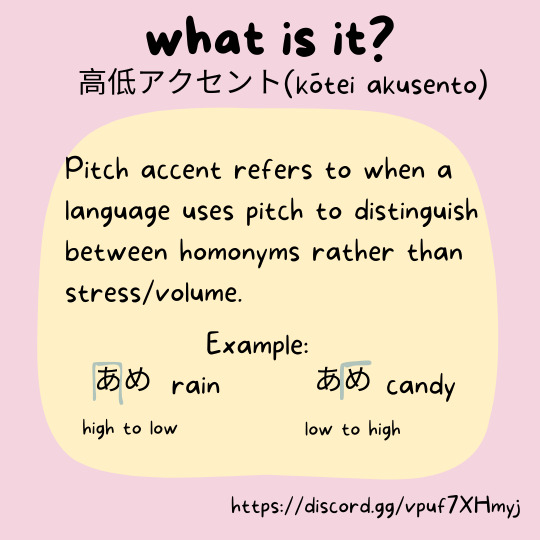
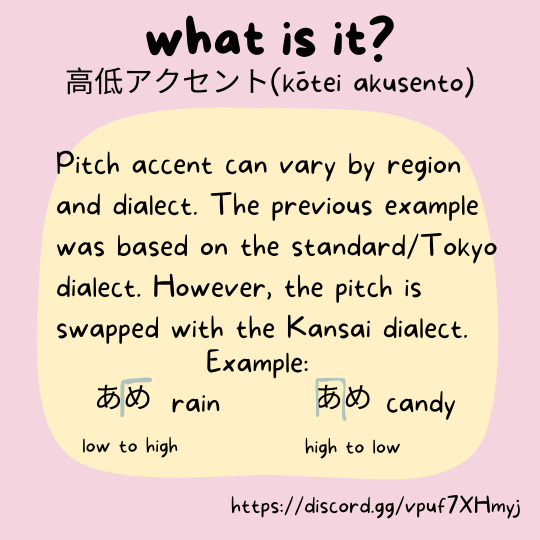


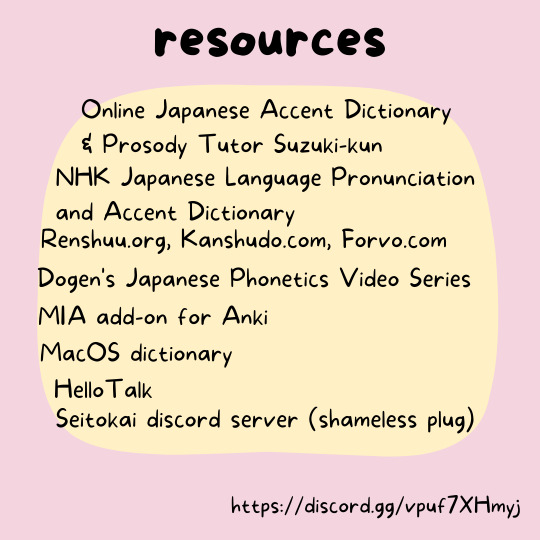

This was launched on the Seitokai IG (seitokaisnihongo). Keep reading this post to get information that is written on the graphics (and the IG caption).
This is a new series that I've been working on for a bit! It'll be discussing pitch accent, dialects, listening comprehension, and anything else that may fall within that category.
If there's a particular dialect that you'd like for us to cover in this series, feel free to stick it in the reblogs, my inbox, my asks, on the Seitokai instagram, or the Seitokai discord server!
Without further ado, here is what the posts say above!
Pitch, Please! Let's talk about pitch accent.
What is it?
Pitch accent, known as 高低アクセント(kōtei akusento) in Japanese, refers to when a language uses pitch to distinguish between homonyms rather than stress/volume. For example: あめ, meaning rain (high pitch to low) vs あめ, meaning candy (low pitch to high pitch).
Pitch accent can vary by region and dialect. The previous example was based on standard/Tokyo dialect. However, the pitch accent is swapped with the Kansai dialect. あめ, meaning rain goes from low pitch to high and あめ, meaning candy goes from high pitch to low.
There are four (4) pitch accent patterns: 平板 (へいばん), 頭高 (あたまだか), 中高 (なかだか), and 尾高 (おだか). These will be discussed in further detail in a later post within this series.
How to work on it?
Listen to native speakers (podcasts, news channels, videos, etc.)
Converse with native speakers (if possible)
Mimic the correct pronunciation
Be willing to ask for help and accept correction
Resources
Online Japanese Accent Dictionary & Prosody Tutor Suzuki-kun
NHK Japanese Language Pronunciation and Accent Dictionary
Renshuu.org, Kanshudo.com, Forvo.com
Dogen's Japanese Phonetics Video Series
MIA add-on for Anki
MacOS dictionary
HelloTalk
If you're looking for fellow learners, there are over 500 of us in the Seitokai discord server (shameless plug) and we'd love to have you!
#japanese#learn japanese#study japanese#pitch accent#japanese dialects#japanese grammar#kanji#vocab#jlpt#reading practice#listening comprehension#reading comprehension#shay's back with another post#pitch please#linguistics#seitokai#grammar
233 notes
·
View notes
Text
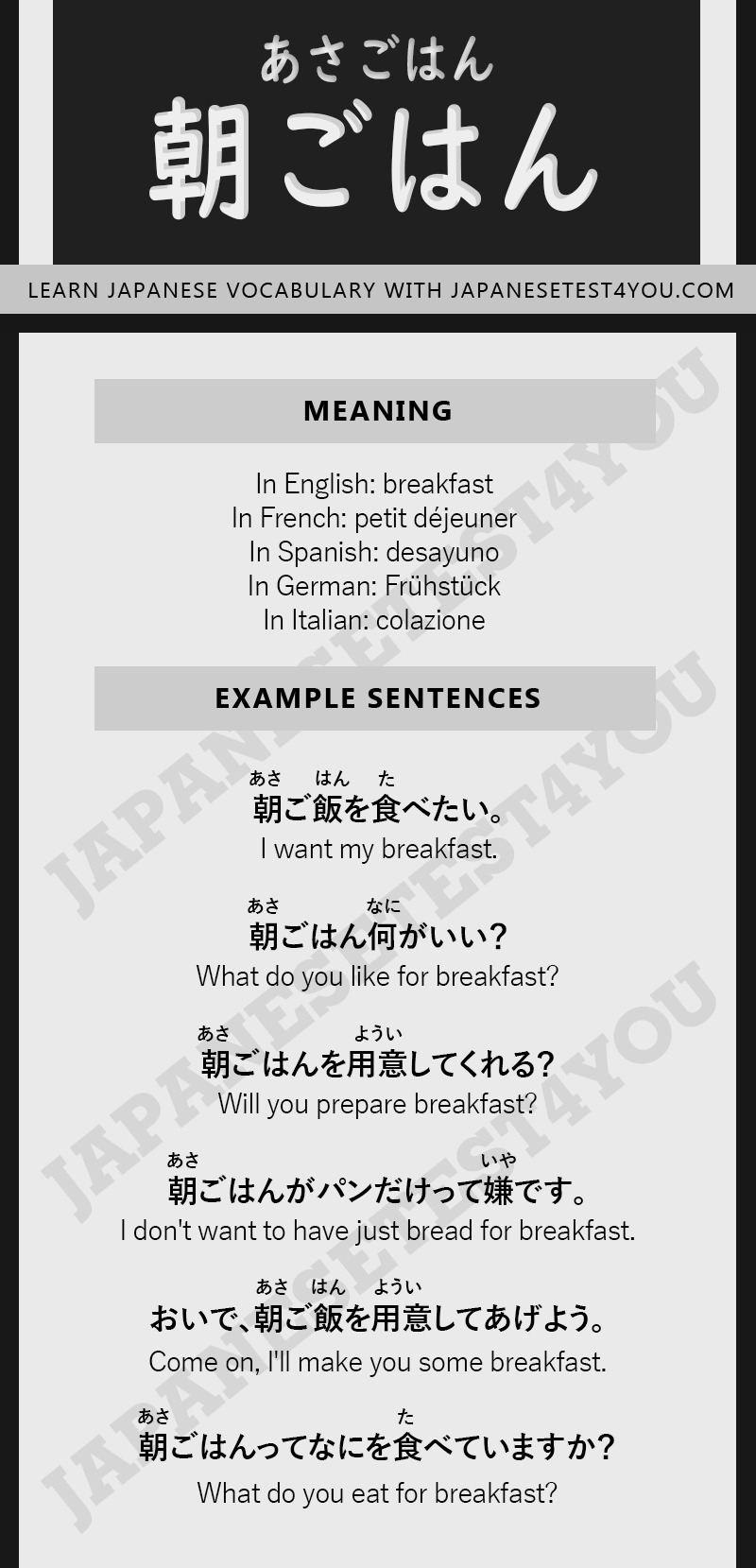
Batch download Japanese vocabulary infographics
#japanese#nihongo#japan#learn japanese#languages#jlpt#jlpt n5#japanese vocabulary#japanese langblr#japanese language#learning japanese
74 notes
·
View notes
Text

Different types of Tears 😢💧
http://www.valiantjapanese.jp
254 notes
·
View notes
Text

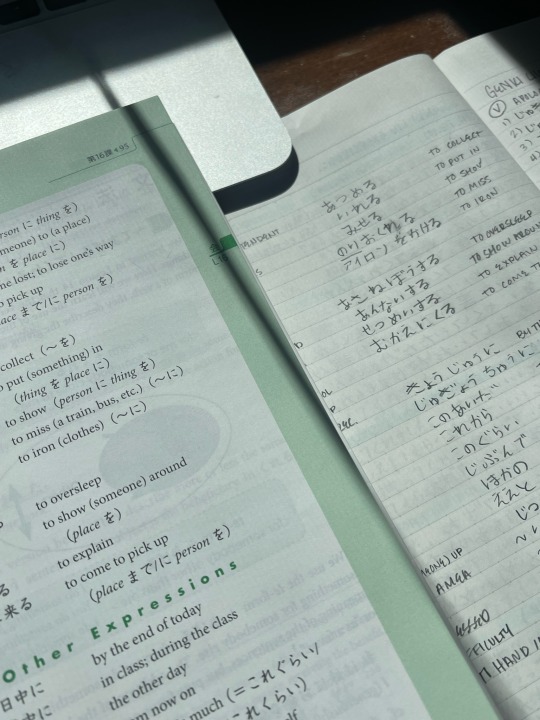
when am i not studying ☕️🏹🏛️
#studyblr#study blog#langblr#langblog#japanese langblr#japanese language#japanese#studyinspo#study motivation#study aesthetic#jlpt n3#jlpt#jlpt n5#jlpt n4#japanese kanji#studystudystudy#exam study#study buddy#study hard#study#study notes#study space#coffee aesthetic#coffee order
85 notes
·
View notes
Text

Mini book haul (and there is more I will share in my next YouTube video ✨)
After so many years I am finally at this level ⭐
49 notes
·
View notes
Text
undertale wears its inspiration on its sleeve, if you know where to look
and i'm streaming one major contributor tonight on my twitch channel (japanese version btw! it's the third game in the MOTHER series, which you may know as where those kids Ness and Lucas in smash come from.
if you need more convincing, this game also has froggy in a car ! see him!!!!


twitch_live
#mother 3#earthbound#japanese langblr#undertale#jlpt#stream plug#twitch stream#stream announcement#spitzy shibbles
65 notes
·
View notes
Text
JLPT N3 文法・例文:~はずがない
意味:Definitely not 接続:普通形+はずがない
1.動詞の普通形+はずがない
2.ナ形容詞だ+な/であるはずがない
3.イ形容詞+はずがない
4.名詞+のはずがない
1.動詞の普通形+はずがない
👉 来(こ)ないはずがない There’s no way he’s not coming
ちゃんと約束(やくそく)したんだから、彼(かれ)が来(こ)ないはずがない。
Having made a proper promise, there’s no way he’s not coming.
👉 食(た)べられるはずがない There’s no way I could eat it
あんなまずい料理(りょうり)が食(た)べられるはずがない。
There’s no way I could eat that bad…

View On WordPress
37 notes
·
View notes
Text


3/100 Days of Productivity!
I'm still sick but I'm doing good academically! at least I think!
Done with my pali assignment! (on day 4 morning btw)
Also done with my HSKK class!
I'm still studying Japanese at N3 level because I'm not ready for N2 yet... Hyouka is helping me along.
A new semester for HGU UNITWIN starts tomorrow! Worldview studies and Health Psychology here I come!!!
I finished "The Con Job" which is a Leverage novel and it was honestly disappointing since I'm rewatching the show. But I'm still gonna pick up "The Zoo Job"
On this week's HAIYUU book club activity: We're reading the little prince! Last week my friend chose that book and I was astounded by the amount of people who thought it was a children's book(??!??) Anyway, we're gonna discuss translations too since we decided to let the readers pick the language of the book they wanted. Personally, I'm reading it in Chinese.
My tonsilitis still persists. Now I have body aches. Idk when I'll get better but god, it better be soon.
#pali studyblr#pali langblr#studyblr#langblr#100 days of productivity#chinese language#chinese studyblr#chinese langblr#japanese language#japanese studyblr#korean language#korean studyblr#hskk#jlpt#japanese#hgu unitwin#worldview studies#health psychology#chronic pain#bookblr#book club#wtnv tarot#hayworth tarot#tarotblr#the little prince
32 notes
·
View notes
Text
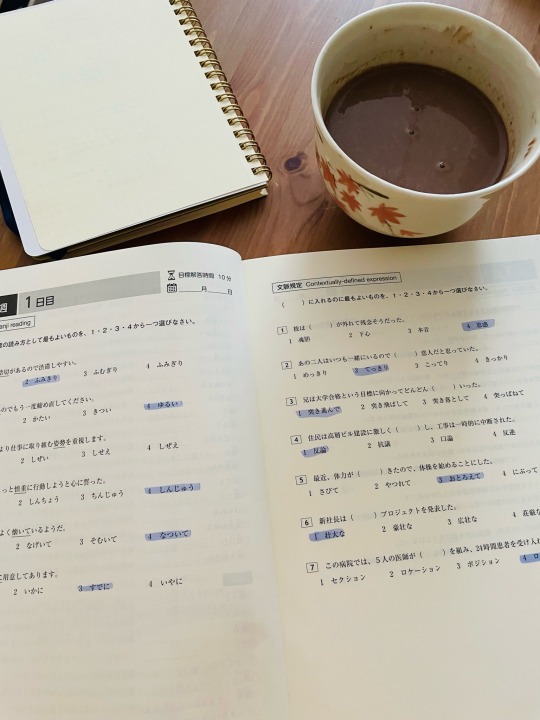
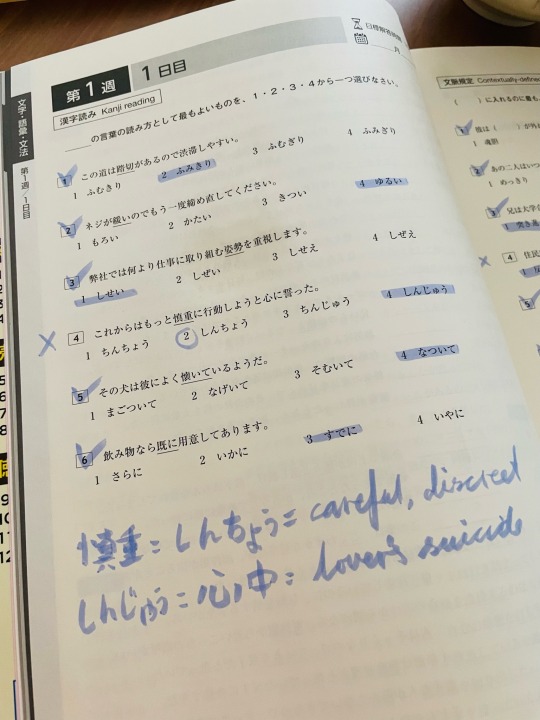
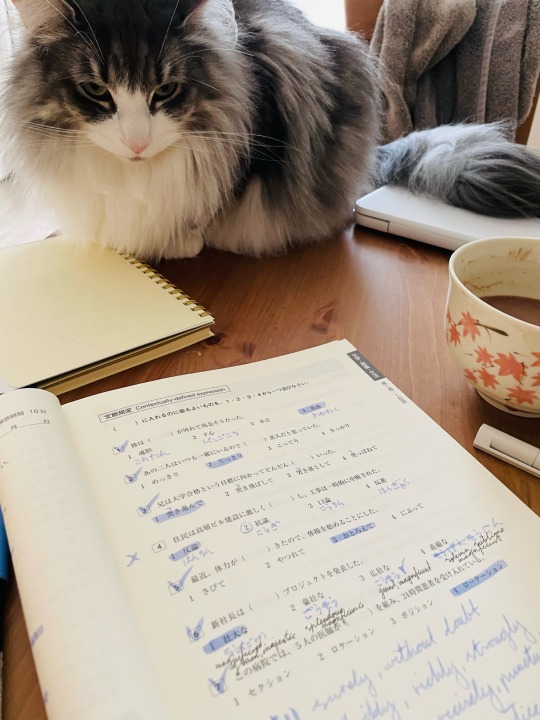


私の字はあまり綺麗じゃないけど、しょうがない。
#japanese#studyblr#langblr#japanese studyblr#japanese langblr#study#japaneseblr#japanese study#勉強#日本語#japanese language#日本語勉強#jlpt#cat#jlpt n1
143 notes
·
View notes
Text
The Difference Between に and へ
Most of the beginner textbooks will teach learners that に is used for destination and へ is used for direction but there are some explanation that are missing and that is what confusing to many learners.
• 公園に行きます。
• 公園へ行きます。
Both sentences are correct. Both means "I'm going to the park".
But... there is a slight nuance difference. When you use に, you put the destination (which is the park) as the main thing you want the listener to know that the place you want to go is the park. The final destination you will arrive at is the park.
On the other hand, if you use へ, you want the listener to feel that you are making a move, you are making a journey, a process, an effort to go to the park. In other words, へ somehow emphasize on your journey to a place.
Let's say you're flying from UK all the way to Australia, that will take at least 20-22 hours by flight. The journey is extremely long and you want the listener to feel that, so you could say by using the particle へ: 私はオーストラリアへ行きます。
Now, the following part is what most teachers or textbooks didn't tell you. A study shows that more and more Japanese people are using に, and へ has gone out of fashion. According to the survey, one of the reasons may be due to globalization and how easily people are connected around the world through the Internet that people don't feel the journey or the distance is long. Therefore, they don't see the need to use へ anymore.
WARNING!!!
There is a grammar point that you MUST use へ instead of に。The pattern is:
へ + の + Noun
Examples:
• 先生へのプレゼント。Gift for teacher.
• 帰宅への道。The way home.
Another situation which needs to use へ is when the news anchor announces this:
台風が北へ向かっています。
The typhoon is heading north.
If you use に and say 台風が北に向かっています, it means you are very sure that the typhoon will land in the north. No one can predict 100% where it will stop or land so it is incorrect to use に in this sentence.
---------------------------------------------------
Vocabulary used in this lesson:
公園 (こうえん) park, playground
プレゼント present, gift
帰宅 (きたく) home
道 (みち) way
台風 (たいふう) typhoon
北 (きた) north
#study japanese#japanese#jlpt#jlpt n1#jlpt n2#jlpt n3#jlpt n4#jlpt n5#language#learn japanese#nihongo#grammar
42 notes
·
View notes
Text
Hey Everyone!
I hope everyone is doing great.
My studying has been going well. I'm getting more and more consistent these days so I'm really proud of it :3
The syllabus is sooooo much tho which is a bit overwhelming but hopefully it all works out. Also, I really recommend Nihongo no Tabi videos! They explain everything very clearly.
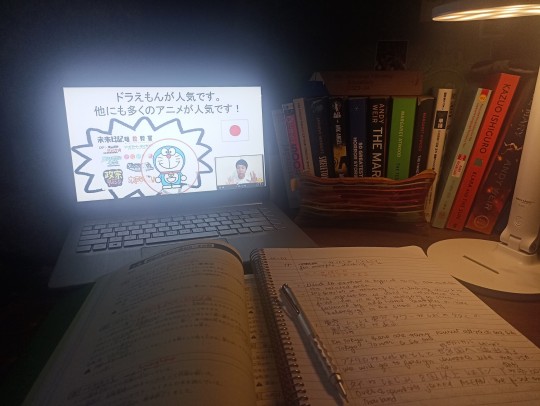
#japanese#japanese language#jlpt#jlpt n2#languages#studyblr#studying#japanese books#language learning#study with me#studyinspo#study aesthetic#study motivation#study blog#japanese learning#japanese grammar#japan
21 notes
·
View notes
Text
Recommendation: Apps for Japanese Learning

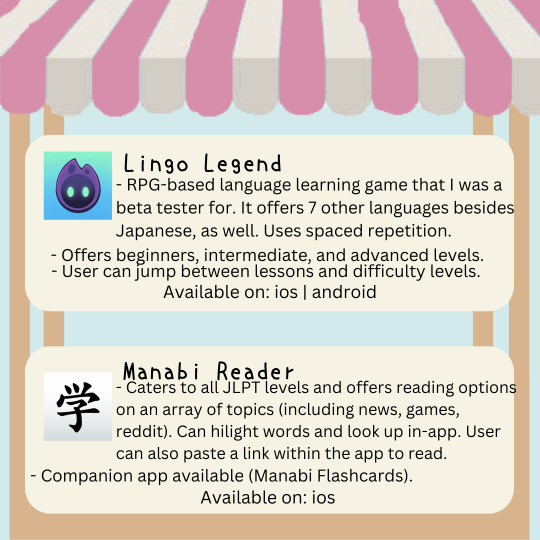
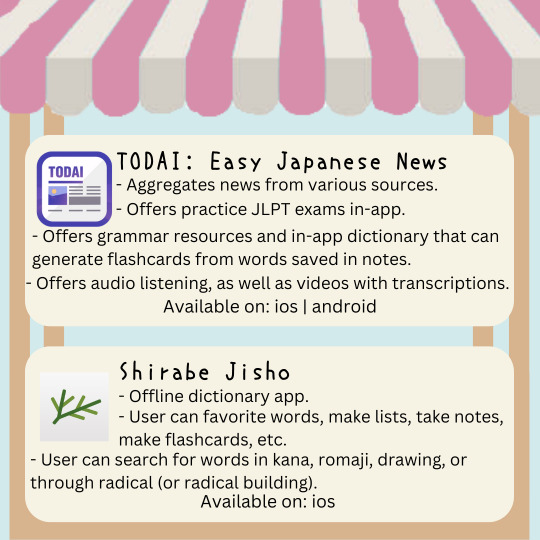

Over the years, I've downloaded and tested many apps. Though my favorite app was discontinued (I miss you, mindsnacks Japanese), there are still others that I don't think I'll be removing from my phone any time soon. In light of duolingo's horrible update causing a large migration and search for other apps, I thought I'd share some of my favorites. Also, some of these apps have websites or discords for you to interact with other users or to ask support questions.
For those who cannot use/don't like the graphics, the written out version is below the break.
Lingo Legend
RPG-based language learning game that I was a beta tester for. It also offers Spanish, French, Japanese, Korean, Mandarin Chinese, German, Italian, and Portuguese. Uses spaced repetition.
Offers beginners, intermediate, and advanced levels.
User can jump between lessons and difficulty levels.
Available on ios and android
Manabi Reader
Caters to all JLPT levels and offers reading options on an array of topics (including news, games, reddit). Can hilight words and look up in-app. User can also paste a link within the app to read.
Companion app available (Manabi Flashcards).
Available on ios
TODAI: EASY Japanese News
Aggregates news from various sources.
Offers practice JLPT exams in-app.
Offers grammar resources and in-app dictionary that can generate flashcards from words saved in notes.
Offers audio listening, as well as videos with transcriptions.
Available on ios and android. Also has a website.
Shirabe Jisho
Offline dictionary app.
User can favorite words, make lists, take notes, make flashcards, etc.
User can search for words in kana, romaji, drawing, or through radical (or radical building).
Available on ios
Renshuu
Think quizlet, but solely for Japanese. You can create your own lists, use others, play shiritori, earn prizes and interact on forums.
You can study grammar, kanji, vocab, flashcards, learn and submit mnemonics. You can also friend people.
Available on ios and android. Also has a website (of which I am an avid user).
Connect with me: Ko-fi Shop & Tips | Discord | Studygram | Ask Box
↳ psst! my ko-fi shop has learning resources on it. try to check back for new things bc im always working on something to add in there
#onigiristudies#heydilli#jpnstudynet#look toki#looktoki#look asta#japanese#langblr#study japanese#learn japanese#language apps#jlpt#jlpt kanji#jlpt studies#kanji#japanese grammar#日本語#勉強#learning through immersion#bookblr#studyblr#hey guys#kingyo hut#my shop#thanks for reading my research posts and my suggestion posts
1K notes
·
View notes